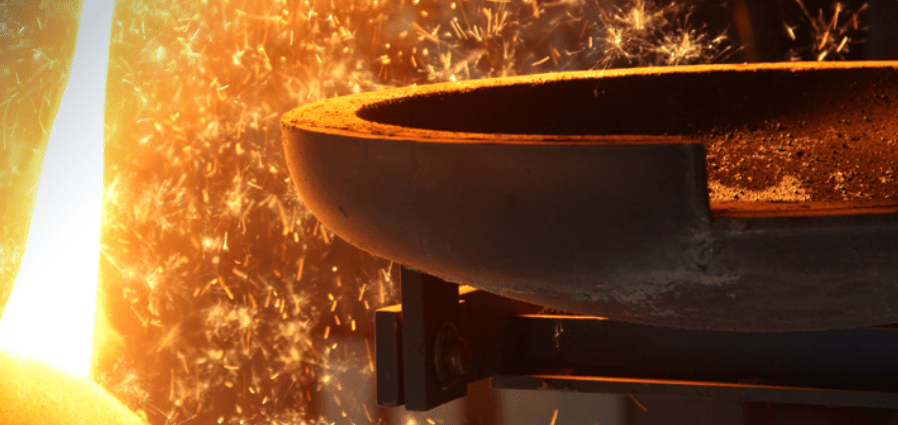Market Report
The Future of Non-Ferrous Slag to 2029

The recession of 2006 to 2012 had a strong impact on the iron and steel smelting industry. The main end-use markets in building construction and road surfacing suffered major falls in activity and revenues, as projects were shelved or delayed. This exposed a fundamental weakness in this industry as a low value product relying on high volume for sustained cashflow. Non-ferous slags have established their own supply chains, with specific end uses for these products, but have become of interest as alternative sources of raw material in the traditional ferrous end-use markets.
Slags appear in processed waste from mining operations and as process residues from resource extraction and refining. In the past, slags were regarded as waste and simply disposed of. As these wastes accumulated, increasing concerns over environmental impact changed perceptions, and slags have increasingly been regarded as a useful low-cost resource for reprocessing into end uses.
A feature of this industry is that the material is a heavy resource and tends to be processed locally – i.e. with mining, crushing, and concentrating plants traditionally close to the source of the waste stream, consumed locally, regionally and nationally, with low cross-border trade (unless the markets are within a 200-mile radius of the supply source). The generally low value per tonne is inevitably a factor that reduces the profitability of shipping such heavy product over large distances. Once concentrated it is more interesting to the Western consumer markets, where most of the smelting and refining capacity exists.
Non-ferrous slags have made some headway in speciality areas and depending on regional availability. The current market expresses a strong interest, tinged with some caution with regard to long term-use, or use in some heavy-duty applications. This is mainly due to the lack of technical research, and the need to invest in R&D to test suitability and durability, and (increasingly) the environmental impact. In some markets where non-ferrous slag is available in large quantities as a dormant resource in landfill, such as India, there has been considerable technical research undertaken. This information is helping the international community to gain more trust in the use of non-ferrous slags as a viable alternative.
The recession of 2006 to 2012 had a strong impact on the iron and steel smelting industry. The main end-use markets in building construction and road surfacing suffered major falls in activity and revenues, as projects were shelved or delayed. This exposed a fundamental weakness in this industry as a low value product relying on high volume for sustained cashflow. Non-ferrous slags have established their own supply chains, with specific end uses for these products, but have become of interest as alternative sources of raw material in the traditional ferrous end-use markets.
Slags appear in processed waste from mining operations and as process residues from resource extraction and refining. In the past, slags were regarded as waste and simply disposed of. As these wastes accumulated, increasing concerns over environmental impact changed perceptions, and slags have increasingly been regarded as a useful low-cost resource for reprocessing into end uses.
A feature of non-ferrous slag industry is that the material is a heavy resource and tends to be processed locally – i.e. with mining, crushing, and concentrating plants traditionally close to the source of the waste stream, consumed locally, regionally and nationally, with low cross-border trade (unless the markets are within a 200-mile radius of the supply source). The generally low value per tonne is inevitably a factor that reduces the profitability of shipping such heavy product over large distances. Once concentrated it is more interesting to the Western consumer markets, where most of the smelting and refining capacity exists.
Non-ferrous slags have made some headway in speciality areas and depending on regional availability. The current market expresses a strong interest, tinged with some caution with regard to long term-use, or use in some heavy-duty applications. This is mainly due to the lack of technical research, and the need to invest in R&D to test suitability and durability, and (increasingly) the environmental impact. In some markets where non-ferrous slag is available in large quantities as a dormant resource in landfill, such as India, there has been considerable technical research undertaken. This information is helping the international community to gain more trust in the use of non-ferrous slags as a viable alternative.
The Future of Non-Ferrous Slag: Market Forecasts to 2027 identifies some typical end uses for the non-ferrous slag residue, mainly in road construction and buildings, as well as substitutes for sand in sandblasting processes. The range of potential applications is gradually expanding as a result of research projects into the suitability of using. It is interesting to note that the one country here most academic research on this topic takes place is India-perhaps not only because of the large-scale dumping of slag waste in landfill, but also because it is recognised to be vastly underutilised low-cost resource. The total global volume of 'output' of the eight types of non-ferrous; slag examined in his report was estimated at 590.4 million tonnes in 2016 based on industry data.